So I'm setting myself into SMD components, as I want to create my own compact 5v step down converter, based on this component.
I've read that these small brown ceramic capacitors are most likely unpolarised, to my knowledge meaning they can be turned both ways and still do their job just fine. But using my multimeter measuring capacitance, gives the result 8.400 uF and while reversed on the same capacitor gives me the result 26.60 uF.
The other capicators give me a more clear answer when measured 220 uF and when reversed 0 uF.
Does this mean they're polerised and can only be put in one way? I would also very much like to know which kind of chip that could be on the back on this 5v step down converter.

